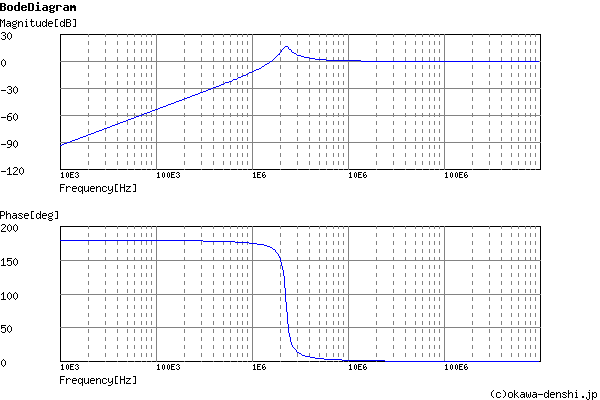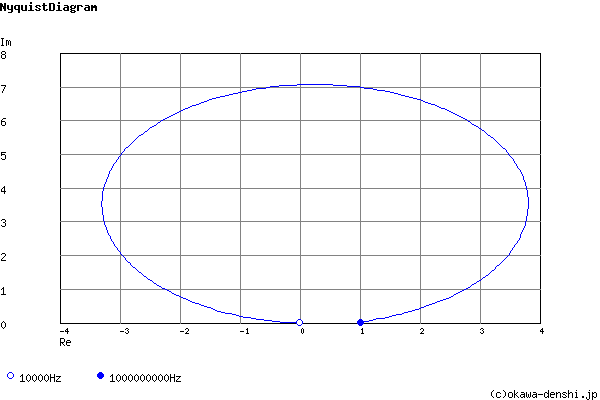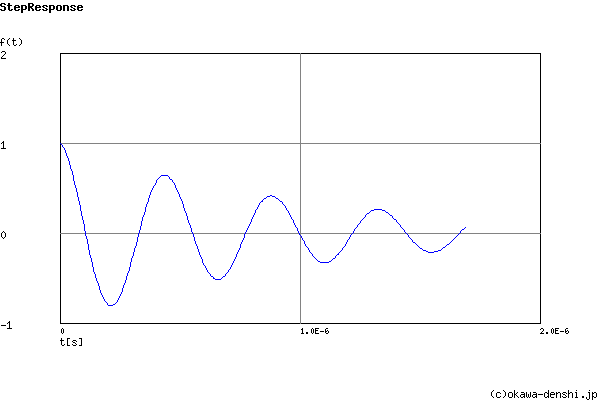(Sample)RLC High-pass Filter Design Tool - Result -
Calculated the transfer function for the RLC High-pass filter, displayed on graphs, showing Bode diagram, Nyquist diagram, Impulse response and Step response.
RLC Filter
| Vin(s)→ |

|
→Vout(s) |
| G(s)= |
s2 s2+2000000s+2E+14 |
Cut-off frequency
fc = 2250790.79039[Hz]
Quality factor
Q = 7.07106781187
Damping ratio
ζ = 0.0707106781187
Pole(s)
p = -159154.943092 +2245156.76206i[Hz]
|p|= 2250790.79039[Hz]
p = -159154.943092-2245156.76206i[Hz]
|p|= 2250790.79039[Hz]
|p|= 2250790.79039[Hz]
p = -159154.943092-2245156.76206i[Hz]
|p|= 2250790.79039[Hz]
Zero(s)
z = 0[Hz]
|z|= 0[Hz]
z = -0[Hz]
|z|= 0[Hz]
|z|= 0[Hz]
z = -0[Hz]
|z|= 0[Hz]
Phase margin
pm= NAN[deg] (f =0[Hz])
Oscillation frequency
f = 2245156.76206[Hz]
Overshoot (in absolute value)
The 1st peak gpk = -0.81 (t =2.1E-07[sec])
The 2nd peak gpk = 0.65 (t =4.3E-07[sec])
The 3rd peak gpk = -0.52 (t =6.6E-07[sec])
The 2nd peak gpk = 0.65 (t =4.3E-07[sec])
The 3rd peak gpk = -0.52 (t =6.6E-07[sec])
Final value of the step response (on the condition that the system converged when t goes to infinity)
g(∞) = 0
Frequency analysis


Transient analysis
